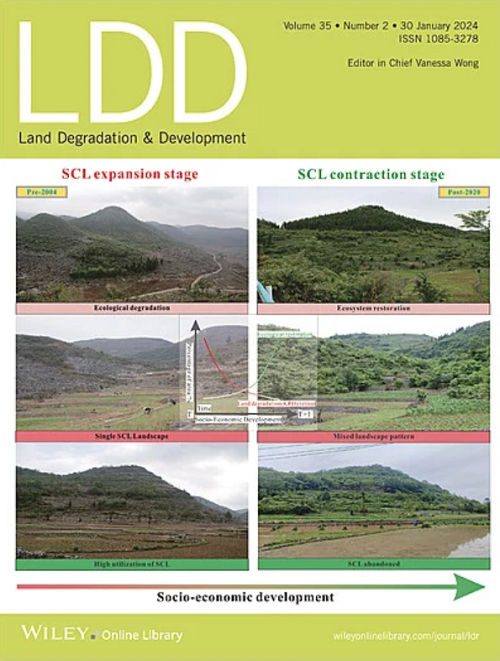Improving Ecological Barrier Area Sustainability Integrating Ecosystem Service Interaction and Social–Ecological System Coupling
IF 3.6
2区 农林科学
Q2 ENVIRONMENTAL SCIENCES
引用次数: 0
Abstract
Ecological barrier areas are the natural area with special ecological functions, and play a vital role in maintaining the global ecological balance, protecting biodiversity, and regulating climate. They also profoundly affect the local social system and the inhabitants' lifestyle. Mitigating trade-offs between distinct ecosystem services and enhancing social–ecological system coupling are essential for the sustainable development of ecological barrier areas. However, the lack of integrating them on topographical gradient features compromises our ability to design precise interventions for regional sustainability. Taking the Sichuan-Yunnan Ecological Barrier area as a case area, this study developed a management approach by integrating ecosystem service interactions and social–ecological system coupling under multidimensional topographical gradients to provide a reference for assessing and improving the sustainability of the ecological barrier area. The results demonstrated that during 2010–2020, topography played a key role in shaping ecosystem service interactions, with the hilly area showing the highest synergistic level for multiple service pairs. The high and highest relief mountain areas had the lowest coupling index of the social–ecological system; this coupling index decreased rapidly in the flatter areas, while it increased in the low and middle relief mountain areas. Based on the above multi-dimensional characteristics, six sustainable development zones were subdivided for formulating differentiated management strategies and improving regional sustainability. This research provides essential insights for improving the sustainability of ecological barrier area regarding differentiated territorial spatial management strategies, and delivers guidance for coordinating relationships between social and ecological systems in other similar areas.求助全文
约1分钟内获得全文
求助全文
来源期刊

Land Degradation & Development
农林科学-环境科学
CiteScore
7.70
自引率
8.50%
发文量
379
审稿时长
5.5 months
期刊介绍:
Land Degradation & Development is an international journal which seeks to promote rational study of the recognition, monitoring, control and rehabilitation of degradation in terrestrial environments. The journal focuses on:
- what land degradation is;
- what causes land degradation;
- the impacts of land degradation
- the scale of land degradation;
- the history, current status or future trends of land degradation;
- avoidance, mitigation and control of land degradation;
- remedial actions to rehabilitate or restore degraded land;
- sustainable land management.
 求助内容:
求助内容: 应助结果提醒方式:
应助结果提醒方式:


